I am detecting straight lines in an image using OpenCv. Below is the code:
import cv2
import numpy as np
img = cv2.imread('Image.jpg')
img = img[:, 10:img.shape[1]-10]
gray = cv2.cvtColor(img, cv2.COLOR_BGR2GRAY)
edges = cv2.Canny(gray, 50, 150, apertureSize=3)
minLineLength = img.shape[1] - 300
lines = cv2.HoughLinesP(image=edges, rho=0.02, theta=np.pi / 500, threshold=10, lines=np.array([]), minLineLength=minLineLength, maxLineGap=2)
a, b, c = lines.shape
for i in range(a):
cv2.line(img, (lines[i][0][0], lines[i][0][1]), (lines[i][0][2], lines[i][0][3]), (0, 0, 255), 2, cv2.LINE_AA)
cv2.imwrite('result.png', img)
For the image(Screenshot of a PDF) Image.jpg(Below) I am getting result.png(Below) as a result which is exactly the output I desire.
But when I give the below Image Test.jpg as an input, my algorithm is not working correctly. It is giving the following error:
a, b, c = lines.shape # 10th Line
AttributeError: 'NoneType' object has no attribute 'shape'
I think because in Test.jpg the horizontal lines are not that straight(because I clicked this by a phone's camera) and also If I change the minLineLength value to let's say 100 it is not showing the above error but showing incomplete faded lines on each row. So can anyone please tell me what params should I change in my algorithm to make it work correctly?


